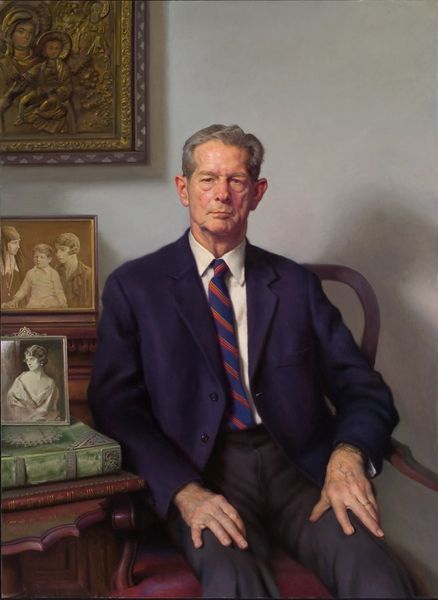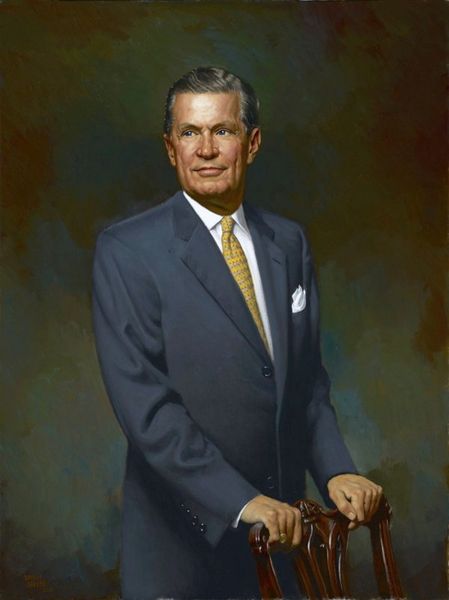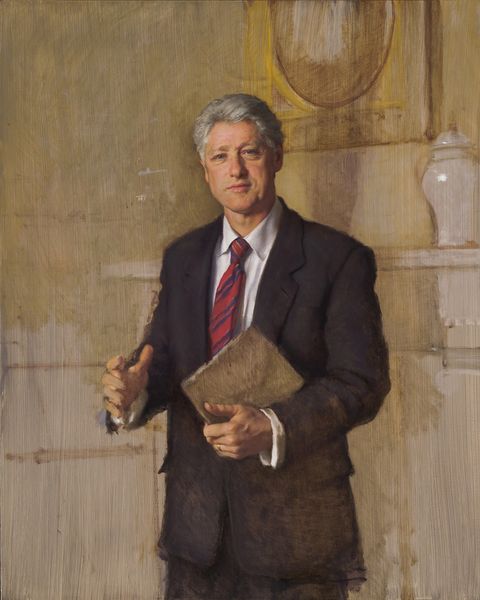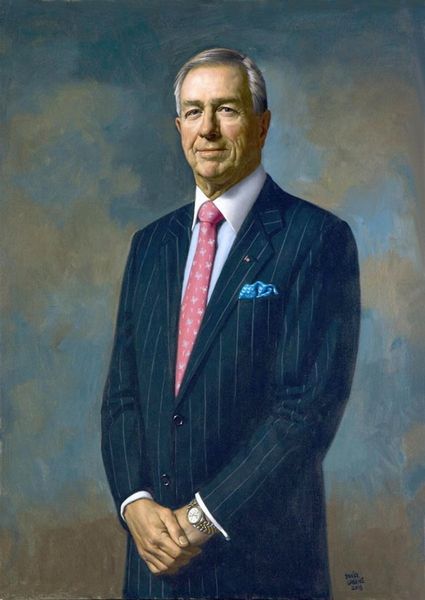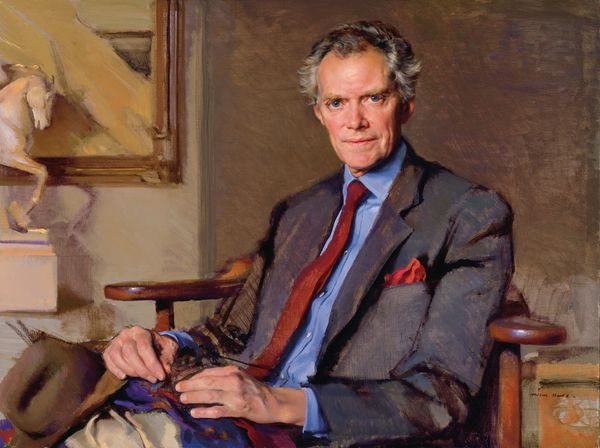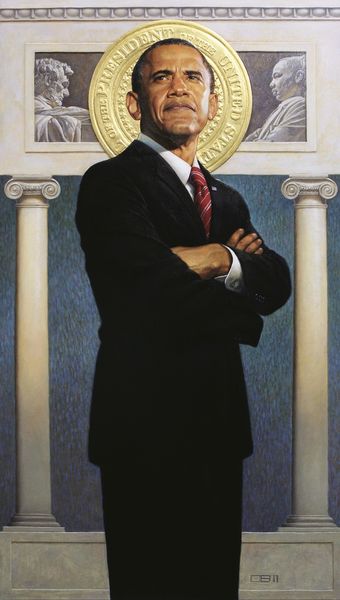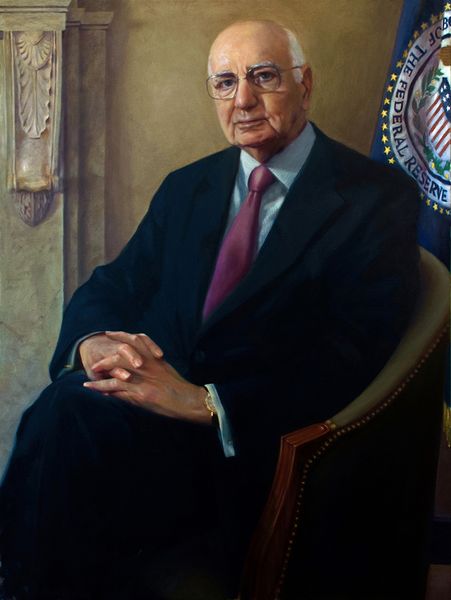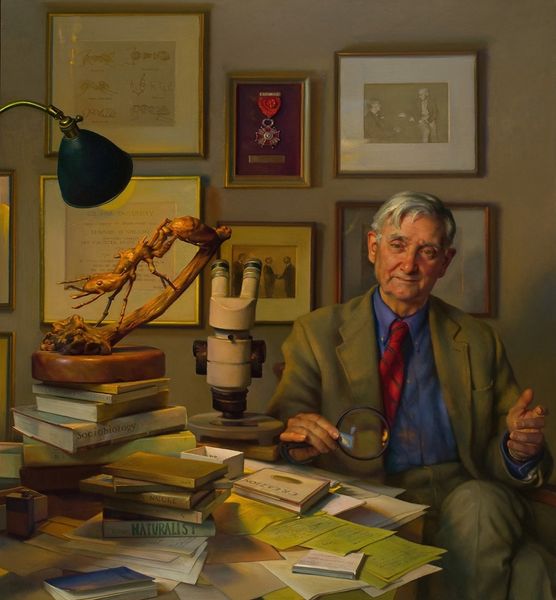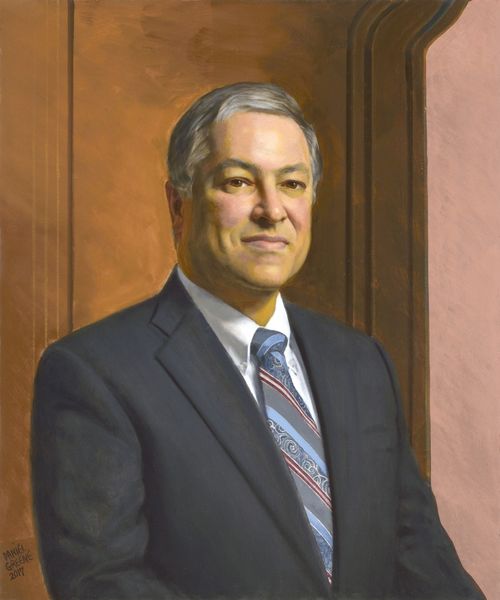
painting, oil-paint
#
portrait
#
figurative
#
contemporary
#
portrait
#
painting
#
oil-paint
#
portrait subject
#
portrait reference
#
portrait head and shoulder
#
portrait drawing
#
facial portrait
#
portrait art
#
modernism
#
fine art portrait
#
realism
#
celebrity portrait
#
digital portrait
Copyright: Modern Artists: Artvee
Curator: This is Nelson Shanks's 2002 portrait of Michael Bloomberg. The medium is oil on canvas, a traditional choice for portraiture of prominent figures. What strikes you about it? Editor: My first impression is how static and formal it feels. The composition is very symmetrical and the color palette is rather muted except for that intense red tie and background, which really pulls the eye. Curator: Indeed. The portrait was commissioned early in Bloomberg's tenure as mayor of New York City, so this formality makes sense. It had a representational purpose—to present Bloomberg in a light of power and competence befitting his new office. The artist, Shanks, had painted other prominent figures like Princess Diana and Bill Clinton, so he understood these conventions well. Editor: I’m interested in the objects around him. The apple, of course, feels very deliberate in the composition. There's a visual interplay there between the hard, geometric lines of the bookshelf behind and the curved form of the fruit. Also, a book labelled Bloomberg, presumably authored by the man himself, is next to the apple. Curator: It speaks to several aspects of Bloomberg's public image—the self-made man who rose through the ranks. But, beyond this self-mythologizing aspect, there is also this constant questioning surrounding Bloomberg's time in office – questions about whether he truly cares about ordinary citizens. Editor: Is that an American flag pin on his lapel? That adds another layer of symbolism; anchoring him in patriotism and national identity. Curator: Yes, it's a conscious inclusion. Consider how, after 9/11, political leaders especially used signifiers to unify a hurting nation and how Bloomberg as Mayor of NYC was right at the heart of all of that. The portrait becomes part of that narrative—carefully constructed, publicly-facing, designed to inspire trust. Editor: For me, that red really energizes what could be a rather drab composition, and I think it adds visual intrigue. But even beyond its symbolic nature, its impact on the painting's dynamic structure is significant, acting as an anchor for the viewers' eyes. Curator: It certainly is striking, given the subdued tones elsewhere. This really underlines how portraits are not simply likenesses; they are carefully crafted constructions contributing to and perpetuating social and political narratives. Editor: Indeed, a close viewing has revealed that, underneath its representational veneer, there's an active set of formal relations at play here. Curator: Agreed, and I find it revealing how the carefully constructed imagery offers us insight into Bloomberg's project for New York City.
Comments
No comments
Be the first to comment and join the conversation on the ultimate creative platform.
